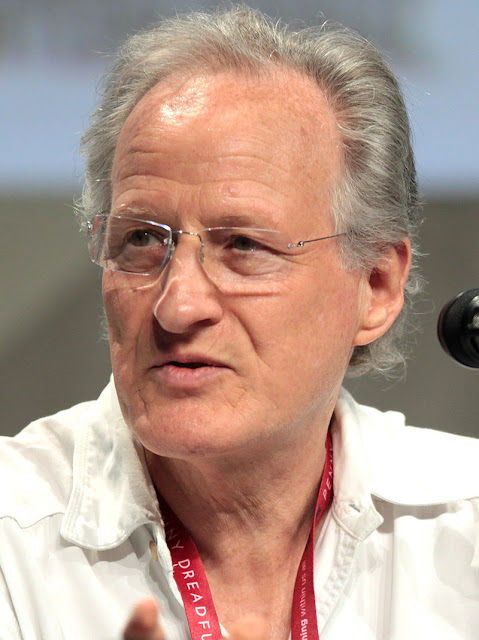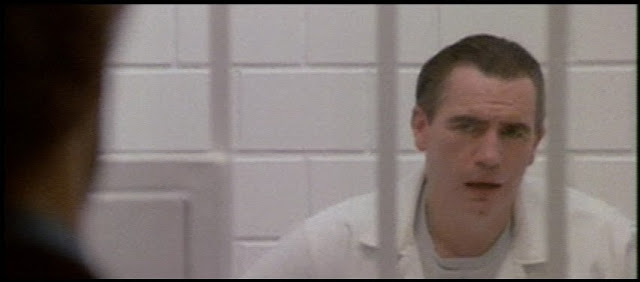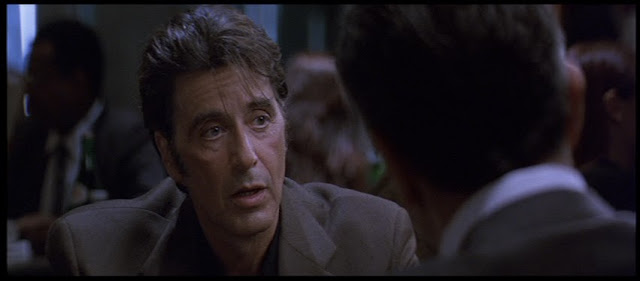Michael Mann speaking at the 2014 San Diego Comic Con International, for "Black Hat", at the San Diego Convention Center in San Diego, California. [Image from the Wikipedia 'Michael Mann (director)' page; Michael Mann SDCC 2014 by Gage Skidmore, licensed under CC-BY-SA 2.0 via Wikimedia Commons.]
Welcome to the analysis of filmmaker Michael Mann. Buttons at the bottom of each post enable navigation through the parts of the analysis.
Michael Kenneth Mann is an American film director, screenwriter, and producer. For his work, he has received nominations from international organizations and juries.
Mann's television work includes being the executive producer on Miami Vice and Crime Story. Contrary to popular belief, he is not the creator of these shows but the executive producer and the showrunner. They were produced by his production company.
Mann is now known primarily as a feature film director and he has a very distinctive style that is reflected in his work. His trademarks include unusual musical scores, such as that by the band Tangerine Dream used in Thief.
In 1986, Mann was the first to bring Thomas Harris's character of Hannibal Lecter to the screen with Manhunter, his adaptation of the novel Red Dragon, which starred Brian Cox (shown at left) as a down-to-earth Hannibal Lecktor (note the different spelling of Hannibal's surname used in Manhunter).
Mann gained widespread recognition in 1992 for his film adaptation of James Fenimore Cooper's novel into the epic film Last of the Mohicans. His biggest critical successes in the 1990s were Heat in 1995 and The Insider in 1999. The films featured Al Pacino along with Robert De Niro in Heat and Russell Crowe in The Insider. The Insider was nominated for seven Academy Awards, including a nomination for Mann's direction.

Above left and right: The deli conversation in Heat: Al Pacino (left) and Robert DeNiro (right).
Russell Crowe in The Insider.
With his next film Ali starring Will Smith in 2001, Mann started experimenting with digital cameras. The film helped catapult Smith to greater fame, and he was nominated for an Academy Award for his performance.
Will Smith in Ali.
In 2004 Mann directed Collateral starring Tom Cruise (shown at left) and Jamie Foxx. On this film, Mann shot all of the exterior scenes digitally so that he could achieve more depth and detail during the night scenes.
After Collateral, Mann directed the film adaptation of Miami Vice which he also executive produced. It stars a completely new cast with Colin Farrell as Don Johnson's character Sonny Crockett, and Jamie Foxx filling Philip Michael Thomas' shoes as Ricardo Tubbs. Public Enemies, released in 2009, was directed, co-written, and co-produced by Mann. It starred Johnny Depp and Christian Bale, with Depp playing John Dillinger in the film, and Bale played Melvin Purvis, the FBI agent in charge of capturing Dillinger.[a]
------------------------------------------------------------------------------------------------
We will begin the study of common themes and other relationships among Mann's films, in the next part of this analysis.
a. Wikipedia, 'Michael Mann (director)'. Web, n.d. URL = https://en.wikipedia.org/wiki/Michael_Mann_(director).













